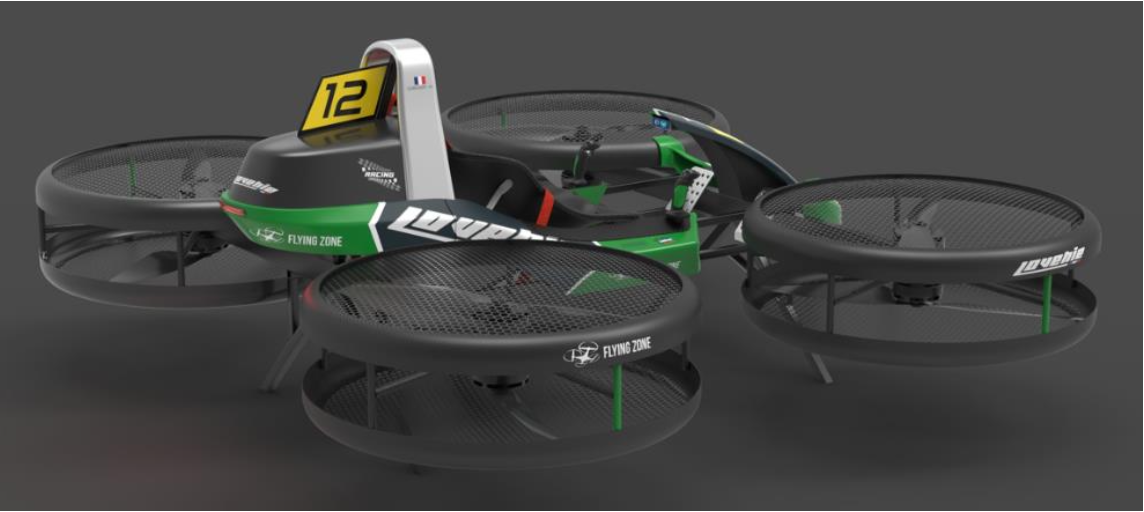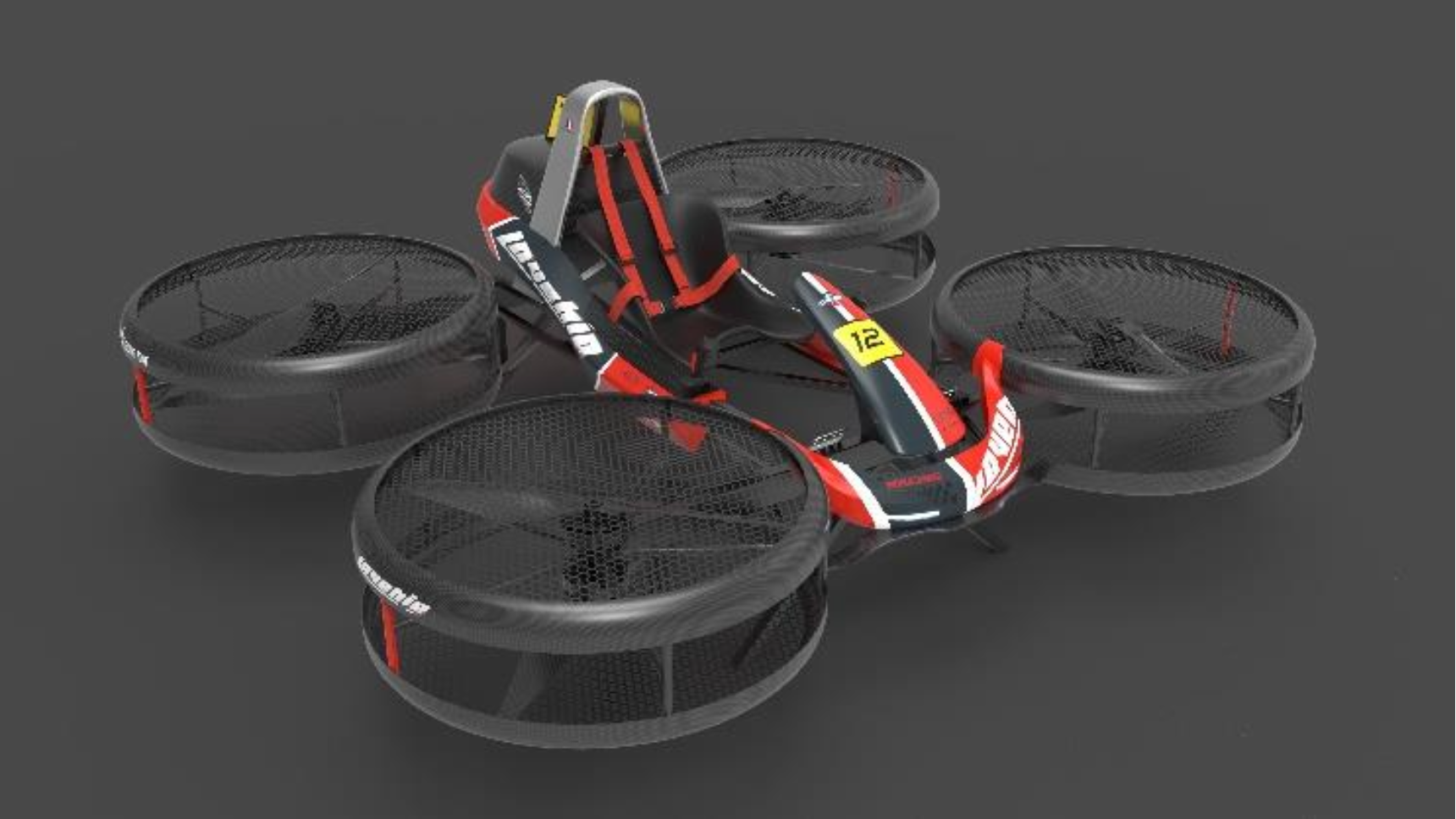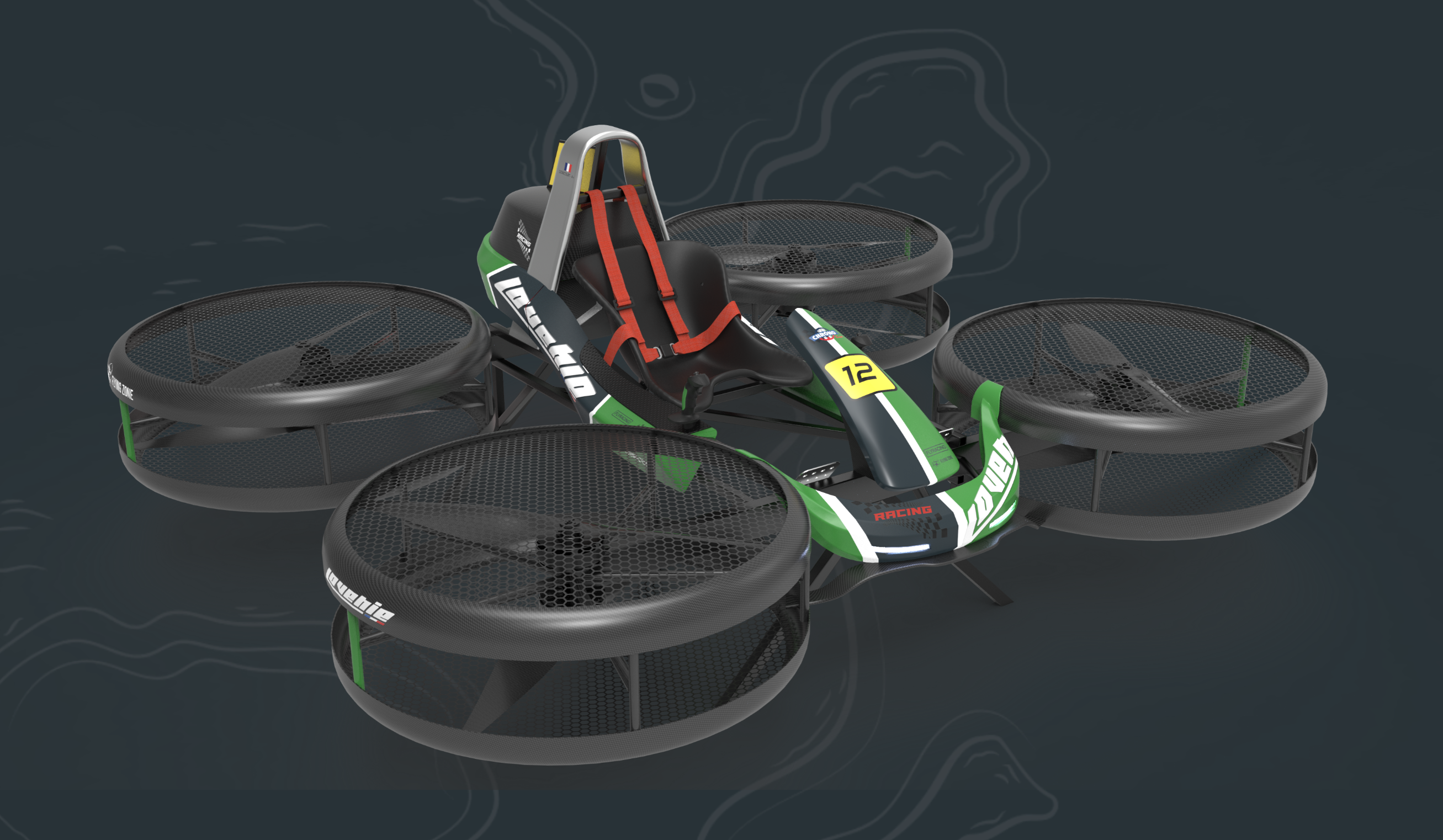French startup Lovenie is seeking to shake up the leisure flying and go-karting market with a brand new product for single flyers, a type of product Lovenie calls a "Kart".
Lovenie is building VTOL vehicles (Vertical Take-off and Landing) that act just like go-carts. In essence, the kart takes the shell of an F1 vehicle, contains no thermal engine and wheels, and adds an electric motor and propellers. Lovenie notes that this process is oversimplified, but you get the idea. The product is built for speed and fun in an enclosed environment — think K1 speed but in the sky.
This idea has no previous models to build from; Lovenie is the pioneer. Go-karting in the sky would be considered too futuristic to everyone except the people behind Lovenie, and the concept is almost here. Lovenie announced in a June 27 press release that tests on their first karts will commence later this summer, and commercialization will begin in the fall of next year.

Their initial business model calls for rentals: members of the public and aviation enthusiasts can rent a ride on the single-passenger craft for 15-minute intervals, in a leisurely or competitive manner.
Lovenie is currently building three different prototypes:
- A single-seater powered by 90kW of electricity. It contains eight motors and weighs 80 kg.
- A hybrid engine (90kW of electricity + 40 hp heat) single-seater weighing 130kg. The hybrid engine gives it 45 minutes of additional flying time.
- A two-seater version of their hybrid prototype.
The controlled environment is heavily regulated considering the number of risks involved. The karts are built such that they can never flip over, and can fly at a maximum height of 2 meters (6.5 feet) above the ground. Flyers will have radios to communicate with a control staff and have a built-in control system such that a control center has remote access to the steering should something go awry.

Lovenie plans to hold "rallies" with their karts where people race for the fastest time on a Lovenie-designed track. The startup writes on their website that they plan to create tracks in a closed and protected environment, most likely in the forest, plain areas, or even on the sea or a lake. There are also talks of using already-made race tracks and adapting them for racing in the sky. One notable benefit to this model is that infrastructure is mainly built up and the track will not wear down over time since no contact is made with the kart. Lovenie is calling these tracks "leisure centers".
For any fan of mechanical sports, cars, or even racing, Lovenie is a thrill. It is adrenaline-filled, environmentally friendly, novel, and leisurely all at the same time. Future plans call for even more vehicles that may not be restricted to enclosed environments, adding to the fun.
Maldivian Airlines Introduces First-Ever Widebody Aircraft, Plans New China Flights » Could You Survive a Plane Crash? The Unlikely Science of Plane Crash Survival » Passengers Encounter Bedbug Infestation on Multiple Turkish Airlines Flights »
Comments (3)
 Bruce
I'm trying to imagine the sound from a dozen or so of those buzzing around.
Bruce
I'm trying to imagine the sound from a dozen or so of those buzzing around.
 Smitty Smithsonite
Would sound great I'd wager! Looks like a blast to pilot!
Smitty Smithsonite
Would sound great I'd wager! Looks like a blast to pilot!
 Eco_Turbo
Agreed!
Eco_Turbo
Agreed!
Add Your Comment
SHARE
TAGS
NEWS Flying Go-Kart Kart Future Drone F1 Racing LovenieRECENTLY PUBLISHED
 Could You Survive a Plane Crash? The Unlikely Science of Plane Crash Survival
With air travel consistently being heralded as the safest form of public transport, most of us do not board a plane pondering our chances of survival in the event of a crash. But, is it possible to survive one?
INFORMATIONAL
READ MORE »
Could You Survive a Plane Crash? The Unlikely Science of Plane Crash Survival
With air travel consistently being heralded as the safest form of public transport, most of us do not board a plane pondering our chances of survival in the event of a crash. But, is it possible to survive one?
INFORMATIONAL
READ MORE »
 Maldivian Airlines Introduces First-Ever Widebody Aircraft, Plans New China Flights
Maldivian, the government-owned national airline of the Maldives, has just welcomed its first-ever wide body aircraft: the Airbus A330-200. With the new aircraft, the carrier also plans brand-new long haul international flights to China.
NEWS
READ MORE »
Maldivian Airlines Introduces First-Ever Widebody Aircraft, Plans New China Flights
Maldivian, the government-owned national airline of the Maldives, has just welcomed its first-ever wide body aircraft: the Airbus A330-200. With the new aircraft, the carrier also plans brand-new long haul international flights to China.
NEWS
READ MORE »
 Thousands of Flights Impacted as Winter Storm Blair Hits U.S.
Winter Storm Blair has unleashed a huge blast of snow, ice, and freezing temperatures across the Central and Eastern United States.
As of Sunday afternoon, over 6,700 flights and counting have been disrupted. This includes cancelations and significant delays leaving passengers scrambling to change flights and adjust travel plans.
NEWS
READ MORE »
Thousands of Flights Impacted as Winter Storm Blair Hits U.S.
Winter Storm Blair has unleashed a huge blast of snow, ice, and freezing temperatures across the Central and Eastern United States.
As of Sunday afternoon, over 6,700 flights and counting have been disrupted. This includes cancelations and significant delays leaving passengers scrambling to change flights and adjust travel plans.
NEWS
READ MORE »




